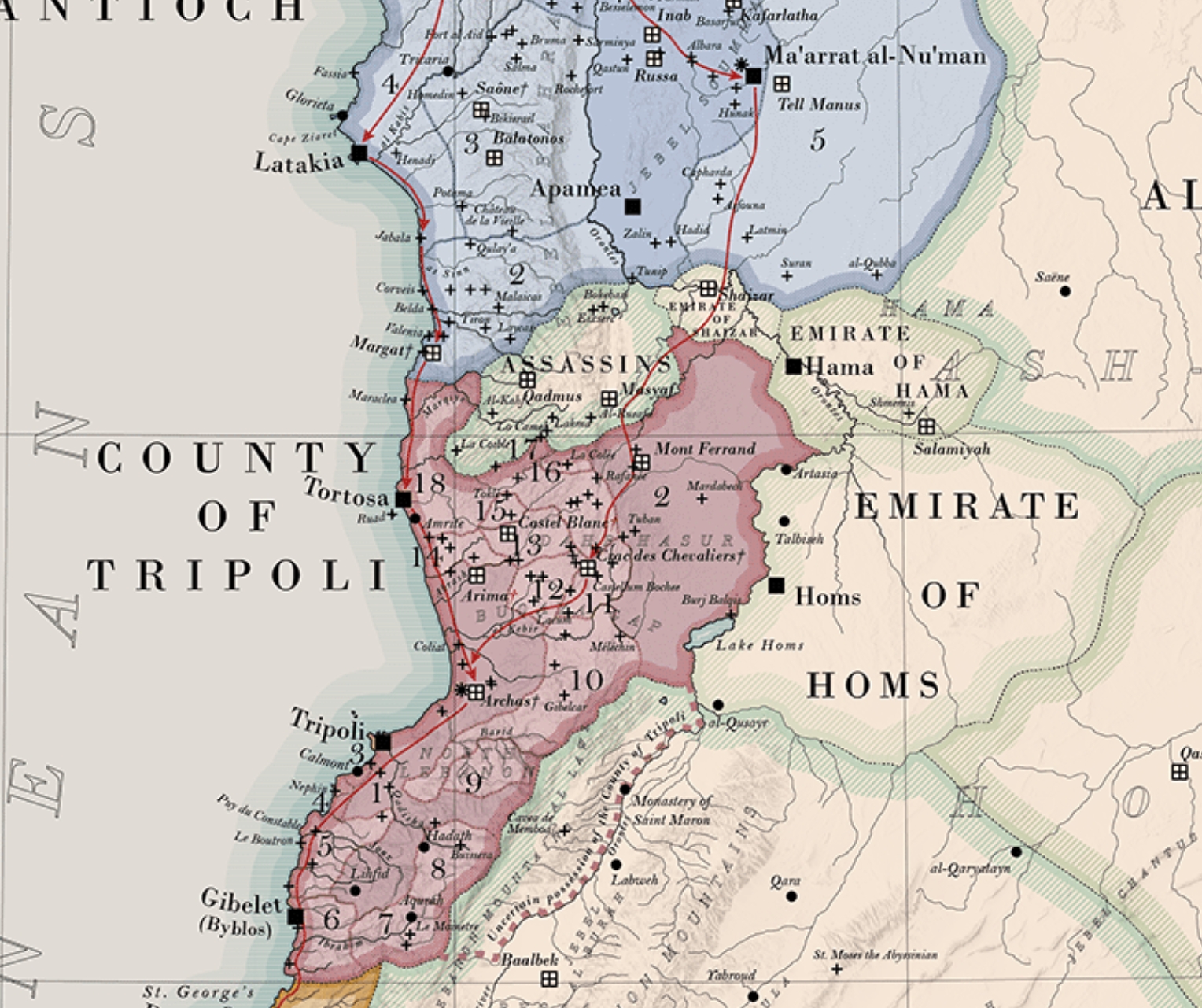
"Crucially for our story, there was a strip of territory that was uneasily close to both the new homelands of the Syrian Nizaris in the Jabal Bahra, and their Sunni Turkic enemies. This was the fragile, complicated crusader state whose loss would create a deadly wedge between the remaining Frankish settlements - the county of Tripoli was strategically vital but chaotic, deadly and hard to defend"
"The County of Tripoli had always been hard to defend, and the Templars had shed much blood in doing so. In 1137 they had participated in the campaign to defend the castle of Montferrand in the county of Tripoli from the armies of Zengi, the atabeg of Mosul. The crusading forces were heavily defeated. Only 18 Templars survived the carnage. But the collapse of the County of Edessa in 1144 made an already difficult job almost impossible."
In the 1140s and 1150s the Templars were pushed near collapse as Antioch's frontiers faced continual pressure and the Latin Kingdom of Jerusalem's armies were overstretched defending against Damascus. The drain on Templar manpower was severe. The County of Tripoli formed a vulnerable strip adjacent to the Syrian Nizaris in Jabal Bahra and their Sunni Turkic enemies, making Tripoli strategically vital but chaotic and hard to defend. The Templars and the Nizaris (Assassins) antagonistically interacted along mountain frontiers for over a century. Heavy Templar losses at Montferrand in 1137 left only eighteen survivors, and the 1144 fall of Edessa intensified Muslim consolidation, forcing Tripoli's counts to reassess eastern defenses.
Read at Medievalists.net
Unable to calculate read time
Collection
[
|
...
]